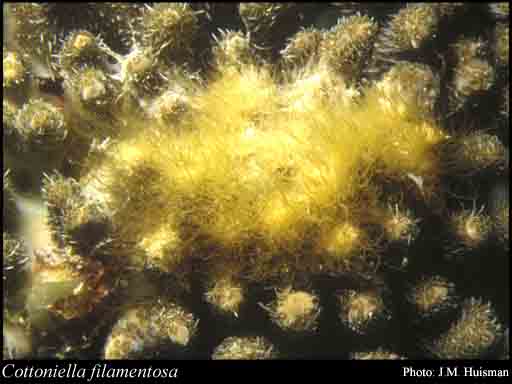- Reference
- Dansk Bot.Ark. 3:478 (1920)
- Conservation Code
- Not threatened
- Naturalised Status
- Native to Western Australia
- Name Status
- Current

Scientific Description
Habit and structure. Thallus light pink to red, with prostrate axes to 10 mm long and erect axes to 6 mm tall. Prostrate axes 180–200 µm wide, attached by multicellular branched rhizoids arising singly from the distal cell of each pair of flanking cells, the flanking cell protruding laterally before cutting off the rhizoid. Rhizoids to 600 µm long, terminating in digitate pads, the cells 25–35 µm diam. [L:B 4–6], tapering to cells 20 µm diam. Erect axes 150–180 µm wide, slightly narrowed at the base and tapering evenly to the apex. Unbranched monosiphonous filaments arising singly from the concave surface of branch apices, to 900 µm long, with cells 17–25 µm diam. [L:B 3–4.5]. Basal and suprabasal cells of monosiphonous filaments c. half as long as distal cells, the basal cell forming a secondary pit connection with the proximal pericentral cell; most cells of monosiphonous filaments of similar width and tapering only slightly to the rounded apices. All axes with 4 pericentral cells; each lateral cell cutting off a pair of flanking cells. Polysiphonous lateral branches arising from concave surface every 5–10 segments. Lower axes lightly corticated by adventitious filaments arising from pericentral cells.
Reproduction. Reproduction not seen in north-western Australia specimens.
Distribution. Apparently widely but sporadically distributed in warmer seas.
[After J.M. Huisman in Algae of Australia: Marine Benthic Algae of North-western Australia, 2. Red Algae: 584–585 (2018)]